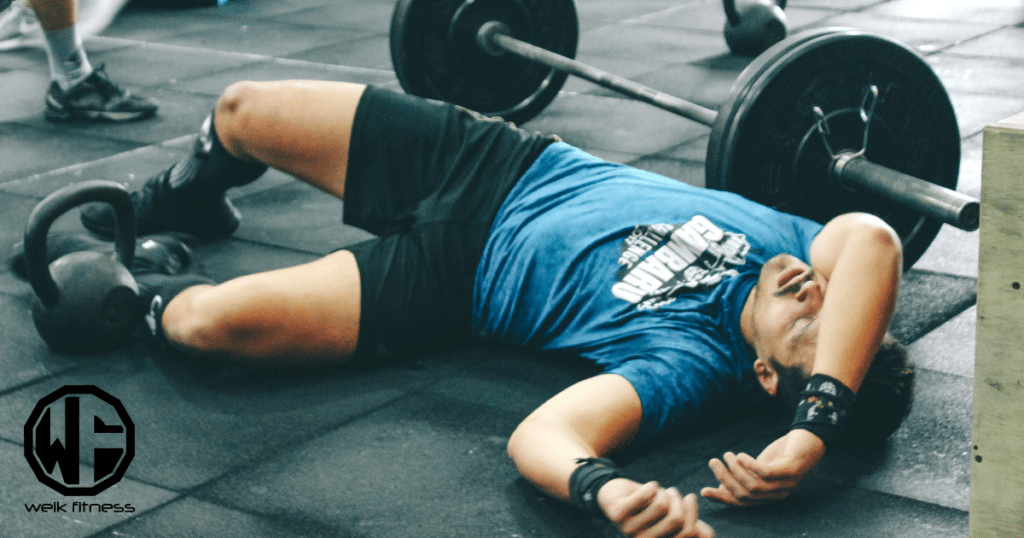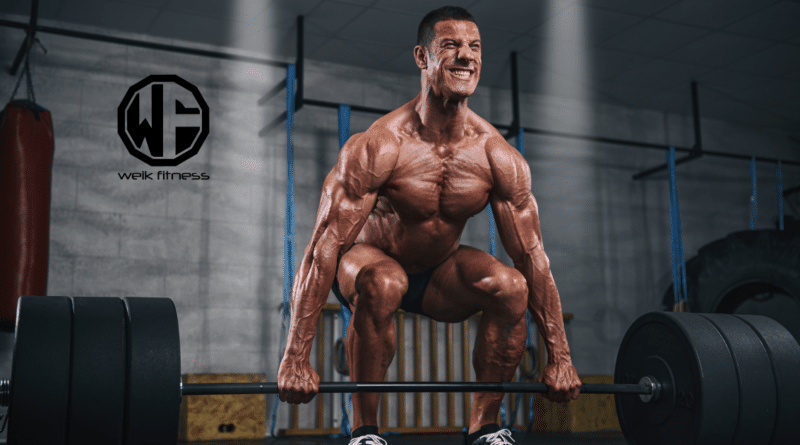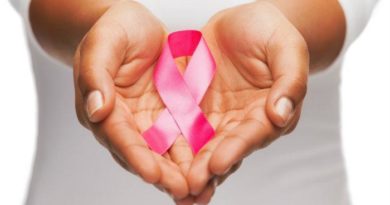Must You Train to Failure to Experience Muscular Hypertrophy?
Train to failure, they say… it’s the only way to truly stimulate the fibers and build muscle. But are they right? Must you take every set to failure? If sets aren’t performed to failure, will they even do anything?
Do you ever find yourself wondering if you really need to push your workouts to the extreme just to bulk up and add the quality size you want? It’s a common question that puzzles many in the fitness world, myself included.
At one point, I came across some pretty mixed signals from research about training to muscle failure. Some experts swear by it for achieving maximum hypertrophy and muscle growth, while others suggest it might not be necessary after all.
So, I took a deep dive into resistance training studies and expert opinions, aiming for clarity on this hot topic. This journey shed light on both sides of the coin — the benefits and possible drawbacks of pushing our muscles to their limits.
In this article, we’re going to dive deeper and share what I learned about whether or not training to failure is essential for hypertrophy. We’ll look at what “training to failure” actually means, how it can impact muscle growth, and even look at other strategies that could lead to impressive gains without going overboard.
Disclaimer: This article is for informational purposes only and is not meant to treat or diagnose any condition. It is recommended that you speak with your doctor before starting any exercise program, changing your daily nutrition, or adding any supplements to your regimen.
Table of contents
- Key Takeaways
- What is Training to Failure?
- What is the Role of Training to Failure for Muscle Growth?
- Pros of Training to Failure
- Cons of Training to Failure
- Alternatives to Training to Failure
- Training to Failure Recommendations for Different Experience Levels
- Practical Application of Training to Failure in Training Programs
- The Benefits of Training to Failure Are Impressive
- Training to Failure Resources
Key Takeaways
- Training to failure means working muscles until they can’t do another rep in proper form. It’s a method some use to grow muscle, but it’s not the only way.
- Doing exercises until you almost fail also helps muscles grow. This is good because always training to failure can lead to more injuries and longer recovery times.
- Both lifting weights until failure and not quite getting there can make your muscles bigger. So, you have choices in how you train depending on what feels right for you.
- There are less intense ways to build muscle, too, like doing lots of reps with lighter weights or focusing on how many sets you do without going all out every time.
- What works best might depend on if you’re just starting or if you’ve been lifting for a long time. Mixing things up and paying attention to how your body feels could help keep workouts safe and effective.

What is Training to Failure?
Training to failure entails pushing your muscles to the point where they can no longer complete another repetition with proper form. It involves reaching a level of muscular fatigue where your body cannot perform additional reps without assistance. The white flag is waving, and your body has reached its limit.
Training to Failure Definition and Overview
Muscular failure happens when you can’t lift a weight past a certain point because your muscles are too tired. This tells you that you’ve chosen a weight that’s just right for your last rep to be very hard, pushing you to your limit.
Training to failure feels like hitting a wall where moving the load any further just isn’t possible.
In my workouts, training close to this point of muscular fatigue means I’m working at an intensity high enough to cause muscle hypertrophy or growth. Each session aims to challenge my muscles in this way, ensuring they get stronger and bigger over time.
This approach isn’t easy, but it shows results by gradually increasing muscle mass and strength.
Different Types: Technical vs. Volitional Failure
I learned that not all failures in the gym are the same. There’s technical failure and volitional failure, each affecting our muscles differently.

Technical failure happens when my form starts to break down during an exercise.
This means I can’t lift a weight properly anymore because my muscles are too tired. I aim to avoid this to prevent injury.
On the other hand, volitional failure is when I choose to stop lifting because it feels too hard, even though I might technically be able to do more with sheer willpower.
Training close to these points has its own benefits for muscle growth — technical failure pushes my limits while keeping me safe from bad-form injuries; volitional failure tests my mental toughness and helps me understand my body better.
Both types play roles in increasing muscle size but should be approached with caution due to risks like joint stress and longer recovery times.
What is the Role of Training to Failure for Muscle Growth?

Training to failure plays a crucial role in muscle growth by maximizing muscle fiber recruitment and promoting hypertrophy. When workouts are pushed close to failure, it triggers greater metabolic stress, mechanical tension, and muscle damage that contribute to muscular development.
Approaching or reaching failure during resistance training actively stimulates the muscles and prompts them to adapt and grow stronger. This approach enhances the effectiveness of each training session and can lead to significant improvements in strength and muscle mass over time.
How Does Training to Failure Build Muscle and Affect Muscle Hypertrophy?
I’ve seen firsthand how pivotal training close to failure is for muscle hypertrophy.
Reports show both resistance exercise to muscle failure (RT-F), and non-failure (RT-NF) stimulate significant increases in muscle size, pennation angle, and fascicle length.
This had a major impact on me. My legs grew stronger, too -— the 1-repetition maximum (1-RM) loads for leg press and leg extension surged similar amounts regardless of whether I pushed to total failure or not.
In my routine, alternating between pushing myself to momentary muscular failure some days and stopping short on others made a big difference. It wasn’t just about the immediate strength gains; it was about shaping my muscles more effectively over time without constant strain or risk of injury.
Knock on wood, I’ve never had a major training accident or injury due to how I train.
Understanding that both approaches could yield similar improvements in skeletal muscle structure gave me the confidence to tailor my training sessions with more flexibility and less fear of missing out on growth by not hitting failure every time.
Comparing Resistance Training to Failure vs. Non-Failure
When we explore the world of fitness, especially in the areas of muscle growth and bodybuilding, we often come across debates about the effectiveness of training to failure versus non-failure.
Let me break this down for you in a way that may be easier to understand, focusing on the key elements and what research suggests.
| Aspect | Training to Failure | Non-Failure Training |
|---|---|---|
| Definition | Exercising until you can’t complete another rep with proper form. | Stopping a set before reaching the point of muscle failure. |
| Muscle Hypertrophy | Can potentially lead to greater muscle gains due to higher stress on the muscles. | Still promotes muscle growth, especially when volume is equalized. |
| Risk of Injury | Higher, due to pushing muscles to their limit. | Reduced, as it avoids pushing muscles and joints to the point of failure. |
| Recovery Time | Increased, because muscles are more stressed and need more time to recover. | Shorter, allowing for more frequent training sessions. |
| Plateau Overcoming | Can help break through plateaus by forcing muscles to adapt to higher stress. | May require changing other variables, like weight or volume, to continue progression. |
| Application for Beginners | Advised with caution, can lead to overtraining or injury if not done correctly. | Recommended, as it allows for a gradual increase in strength and endurance. |
| Science Says | Some studies hint at greater gains, but risks are higher. | Research shows no significant difference in strength gains when volume is equalized. |
Let me lay it out here…
The choice between training to failure and non-failure isn’t black and white. Both methods have their place in a well-rounded fitness regimen, and your decision should reflect your personal goals, experience level, and ability to recover.
Remember, it’s crucial to listen to your body and adjust your training accordingly to avoid injury and ensure continuous progress.
Pros of Training to Failure

Training to failure can potentially lead to greater muscle gains. It enables overcoming plateaus and pushing muscles beyond their usual limits, stimulating growth.
1. Potential for Greater Muscle Gains
Potential for more muscle gains exists with training to failure, compared to non-failure. Research has shown that resistance training leading to repetition failure can help increase muscle strength and mass.
For instance, a study by Schoenfeld et al. in 2015 found similar increases in muscle cross-sectional area (CSA), pennation angle (PA), fascicle length (FL), and 1-repetition maximum (1-RM) between low-load to failure and high-load to failure, with greater improvements in strength for the high-load group.
In simple terms, when it comes to maximizing your strength gains and muscle hypertrophy, incorporating training to failure strategically into your workout routines may lead to better results than solely relying on non-failure approaches.
This approach aligns well with fitness enthusiasts and bodybuilders seeking impactful strategies for enhancing their muscular strength and hypertrophy.
2. Overcoming Plateaus
Breaking through plateaus in training can be achieved by incorporating advanced resistance techniques and methods. This additional stimulus is essential for well-trained athletes to prevent training monotony and maximize adaptations when facing a performance plateau.
Additionally, recent studies highlight the importance of muscular failure in low-intensity resistance training (LI-RT) for maximizing adaptations. This may serve as an effective strategy for overcoming plateaus and achieving continued progress in strength and muscle gains.
By staying informed on these findings and being open to adding new stimuli, we can strategically navigate through plateaus while optimizing our fitness journey.
Cons of Training to Failure

Training to failure does come with some cons that we wanted to lay out below.
1. Risk of Injury and Joint Stress
Pushing muscles to failure too often during strength training carries the risk of overtraining, leading to a greater chance of musculoskeletal injury and placing undue stress on the joints.
Bouncing back from these injuries can also prolong recovery time, impede progress, and increase the strain on other muscle groups, compensating for the injured area. For instance, high-intensity training close to failure may lead to stronger hemodynamic responses for an extended period, potentially increasing cardiovascular strain.
Incorporating strategies that mitigate these risks while still promoting muscular hypertrophy is crucial when crafting a well-rounded workout regimen.
One personal example was experiencing joint discomfort after consistently pushing exercises close to technical or volitional failure without adequate recovery periods. Recognizing signs of overtraining helped me adjust my approach and prevent potential injuries by balancing intensity with proper rest intervals.
This allowed me not only to maintain consistent progress but also to avoid unnecessary setbacks due to overuse injuries stemming from excessive training near failure points.
2. Increased Muscular Recovery Time and Neural Fatigue
Increased recovery time and neural fatigue are critical considerations for effective training. Pushing the body to failure can lead to longer recovery periods due to the heightened stress placed on muscles, tendons, and ligaments.
This prolonged recovery time may limit the frequency of high-intensity workouts, potentially affecting overall training volume and progress.
Moreover, intense exercise close to failure can cause neural fatigue. This affects the central nervous system’s ability to recruit muscle fibers efficiently during subsequent workouts, impacting strength levels.
It is vital to balance workout intensity to prevent excessive strain on the body and allow for adequate recovery between sessions while minimizing neural fatigue.
Alternatives to Training to Failure

Below are a couple of alternatives to training to failure. If you don’t want the risks or training to failure isn’t for you, try the below.
1. Submaximal Sets
Submaximal sets are often overlooked but incredibly powerful. These sets involve lifting a weight that is less than your maximum capacity, allowing for more repetitions with controlled form.
Through this method, the muscles are exposed to prolonged time under tension and metabolic stress, which can stimulate hypertrophy. Studies have shown that submaximal training within the 5-15 rep range can lead to significant muscle growth while minimizing the risk of overtraining or injury.
In my experience, incorporating submaximal sets into my routine has brought about noticeable gains in muscle size and strength without pushing my body to the brink.
Related Article: 5 Training Methods to Help Maximize Your Muscle Growth
By strategically using lighter loads and focusing on quality repetitions rather than maximal effort, I’ve been able to challenge my muscles effectively while also promoting better recovery between sessions.
This approach has not only enhanced my overall performance but has also allowed me to sustain long-term progress without hitting plateaus or succumbing to excessive fatigue.
2. Volume Training
Volume training involves performing a high number of sets and reps with moderate to heavy weights. This approach is geared towards increasing overall work capacity and muscle endurance.
It typically involves doing multiple sets at a certain percentage of one’s maximum effort, resting for short periods between sets, and aiming for muscular fatigue without reaching complete failure.
Research indicates that volume training can lead to significant gains in muscle hypertrophy due to the cumulative effect of the increased workload on the muscles over time.
I have found that incorporating volume training into my workout routine has helped me push past plateaus and achieve consistent progress in both strength and muscle mass. The key is to carefully manage intensity, load, and recovery periods to ensure sustained improvement without risking burnout or overtraining injuries.
By gradually increasing the total volume of work while allowing adequate rest between sessions, I have experienced noticeable improvements in both physical performance and muscular development.
Training to Failure Recommendations for Different Experience Levels

Tailor the intensity of your workouts based on your experience level and consider incorporating submaximal sets or volume training for a balanced approach to muscle growth. When training to failure, it would be beneficial to have a training partner with you.
Training to Failure for Beginners: CAUTION ADVISED
As beginners, it’s important to approach training with caution. Studies show that for those new to strength training, pushing exercises to complete failure may not be necessary for the maximal recruitment of motor units (MUs).
It is advisable to perform resistance training (RT) until reaching a level of substantial fatigue but avoiding total muscle failure. This helps in achieving strength and muscle mass gains without exposing oneself to excessive risk of injury or extreme fatigue.
When starting out, I remember feeling eager to push myself to the limit in every workout session. However, gradually incorporating submaximal efforts into my routine allowed me to make significant progress while minimizing neural fatigue and joint stress.
As beginners embarking on this fitness journey, we should prioritize safe and sustainable progression as we build a foundation for our future training endeavors.
Training to Failure for Intermediate to Advanced: STRATEGIC USE
As an intermediate to advanced fitness enthusiast or bodybuilder, strategic use of training to failure can optimize your muscle growth while minimizing the risk of injury and excessive fatigue.
Integrating accentuated eccentric loading, drop sets, and sarcoplasmic stimulating training techniques can provide a time-efficient alternative for increasing metabolic stress without frequent full muscular failure.
Well-trained athletes often benefit from incorporating advanced resistance training methods like partial repetitions or accommodating resistance exercises to overcome plateaus and prevent monotony in their workouts.
Integrating these strategies into your workout routine as an intermediate to advanced athlete allows you to continually challenge your muscles without consistently pushing them to complete failure, helping prevent overtraining and reduce the risk of injury.
By strategically using these techniques alongside traditional resistance training methods, you can effectively stimulate muscle growth while maintaining optimal recovery and performance levels.
Practical Application of Training to Failure in Training Programs

Integrate failure training strategically within workout cycles to experience the best results possible.
Incorporating RPE (Rate of Perceived Exertion)
Incorporating RPE (Rate of Perceived Exertion) enables me to gauge my workout intensity. The RPE scale provides a subjective measure of how hard I’m exercising (or you’re exercising).
Implementing RPE in my training helps me adjust the intensity based on how challenging the workout feels, regardless of external factors like weight or reps, allowing for personalized and effective sessions.
I’ve found that incorporating RPE can prevent exceeding safe limits during workouts, reducing the risk of injury and promoting more sustainable progress over time. By integrating the RPE scale into my training programs, I can tailor each training session to my body’s readiness, ensuring optimal exertion without unnecessary strain or fatigue.
This keeps my workouts focused and purposeful while maximizing long-term gains without compromising safety or recovery.
When to Integrate Muscular Failure Training in Workout Cycles
Integrating failure training into workout cycles should be strategic and deliberate. It’s advisable to include periods of failure training, typically around six weeks, followed by 1-2 weeks off from this type of training.
This approach helps prevent overtraining, allowing for recovery and adaptation. As a bodybuilder, I have found that incorporating these structured phases has been beneficial in enhancing muscle growth while avoiding the risk of overexertion.
Additionally, monitoring personal progress and fatigue levels closely during these phases is crucial to ensure optimal results without compromising overall performance.
By strategically integrating failure training into workout cycles, you can maximize its benefits without risking burnout or injury. This personalized approach ensures that your body receives the necessary stimulus for muscle growth while also allowing adequate recovery time to avoid overtraining.
The Benefits of Training to Failure Are Impressive

Lifting to failure is a great way to see the results you been looking for. Training to failure in resistance exercise can contribute to muscle hypertrophy and strength gains. While it may not be essential for untrained individuals, incorporating occasional workouts with failure sets could benefit advanced lifters.
Strategic inclusion of lifting close to failure, backed by recent findings, is seen as a valuable tool for optimizing muscle growth. It’s important to acknowledge that the approach should align with individual goals and experience levels.
Remembering these key considerations will ensure the effective incorporation of training-to-failure methods into comprehensive workout programs for maximizing muscular hypertrophy and strength gains.
Training to Failure Resources
- https://pmc.ncbi.nlm.nih.gov/articles/PMC4731492/
- https://www.verywellfit.com/definition-of-training-to-failure-3498621
- https://pmc.ncbi.nlm.nih.gov/articles/PMC6950543/
- https://pmc.ncbi.nlm.nih.gov/articles/PMC7725035/
- https://www.sciencedirect.com/science/article/pii/S2095254621000077
- https://www.sci-sport.com/en/articles/training-to-failure-or-not-impact-on-hypertrophy-and-strength-193.php
- https://www.healthline.com/health/exercise-fitness/hypertrophy-vs-strength
- https://www.vbtcoach.com/blog/the-risk-reward-of-training-to-failure
- https://pmc.ncbi.nlm.nih.gov/articles/PMC6303131/
- https://builtwithscience.com/fitness-tips/training-to-failure/
- https://pmc.ncbi.nlm.nih.gov/articles/PMC7927075/
- https://pmc.ncbi.nlm.nih.gov/articles/PMC9908800/
- https://pmc.ncbi.nlm.nih.gov/articles/PMC4961270/
- https://www.muscleandmotion.com/should-you-train-to-failure/


*Disclosure: This article may contain affiliate links or ads, which means we earn a small commission at no extra cost to you if you make a purchase through these links. These commissions help support the operation and maintenance of our website, allowing us to continue producing free valuable content. Your support is genuinely appreciated, whether you choose to use our links or not. Thank you for being a part of our community and enjoying our content.
PLEASE CONSIDER SHARING THIS ON YOUR SOCIAL MEDIA TO HELP OTHERS LEARN MORE ABOUT THIS TOPIC.





